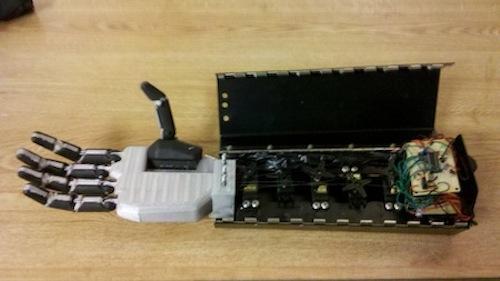Account for Uncertainty
November 12, 2013

All measurements include some uncertainty due to the measuring instruments we use.
When I use a DVM to measure the output from a power supply, it shows 3.31 volts. But that reading does not mean I have an exact 3.31V output. For my DVM it simply means the 3.31 reading corresponds to a voltage closer to 3.31 volts than to either 3.30 or 3.32 volts. Based on this conclusion, the power-supply voltage must exist somewhere between 3.3050000... and 3.3149999... volts. Thus I should put a power-supply voltage of 3.31V plus or minus 0.005 volts in my lab notebook. The " plus or minus 0.005 volts" represents the absolute measurement uncertainty, δV.
Keep in mind that measurement uncertainties do not always equal one half of the smallest measurement interval. Suppose you use a ruler with 1mm divisions to measure a rug with a somewhat ragged edge. Here the uncertainly could amount to plus or minus 2cm.
D. C. Baird, author of an excellent book on experimentation (see For more information), explains that not all uncertainties have a positive and a negative range. A digital clock, for example, displays the time 04:26. The actual time exists between 04:26 and 04:27, so you have a +1-second uncertainty.
Suppose you use a GPS receiver to locate a campground. An error of a few meters makes little difference. But if you use a GPS reading with the same uncertainty to locate a corner of a building lot, you'll have problems. The voltage and time examples provide absolute uncertainties, but this information doesn't offer insight into how an uncertainty affects results. For that information you use relative uncertainty, calculate:

In the voltage example:
Relative uncertainty = δV / V
or plus or minus 0.005V / 3.31V = plus or minus 0.0015 ( plus or minus 0.15%)
In my lab I measure voltage and current to calculate power dissipation. From the voltage information above and a 1.72A current with δI = 0.001A I can calculate the overall absolute uncertainty. I have skipped the simple calculus that leads to the equation:
δP = E*δI + I*δE
δP = (3.32V * 0.001A) + (1.72A * 0.005V) = 11.9 mW
Find general methods to calculate uncertainty values for two or more variables in Baird's book, listed below.
For more information:
Baird, D. C., Experimentation: An Introduction to Measurement Theory and Experiment Design, Prentice-Hall. 1995. ISBN:978-0133032987.
Bell, Stephanie, "A Beginner's Guide to Uncertainty of Measurement," A Measurement Good Practice Guide, National Physical Laboratory Stephanie Bell, No. 11, Issue 2.
"Evaluation of measurement data: Guide to the expression of uncertainty in measurement," Working Group 1 of the Joint Committee for Guides in Metrology (JCGM/WG 1), 2008.
Related posts:
About the Author(s)
You May Also Like
.jpg?width=300&auto=webp&quality=80&disable=upscale)


